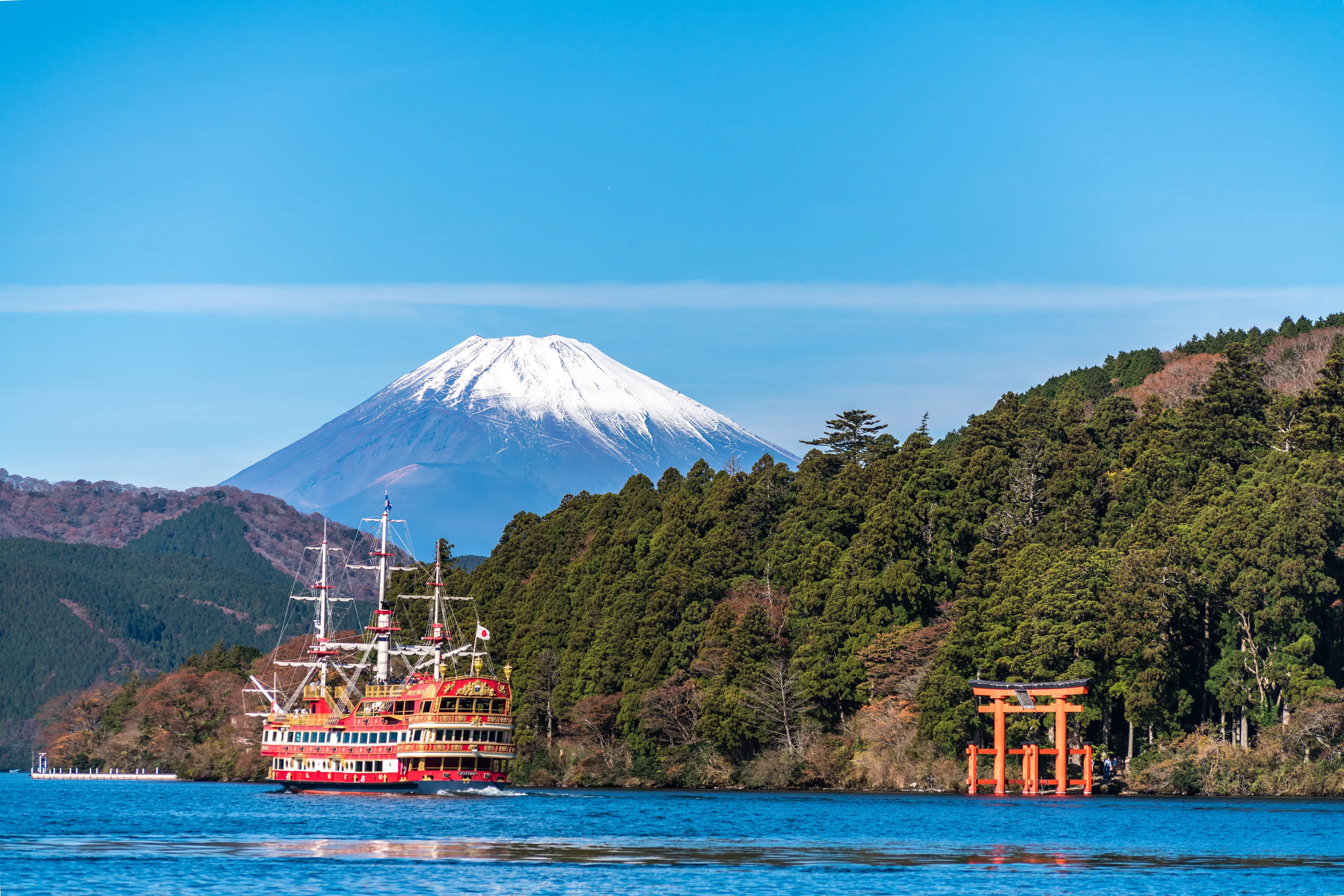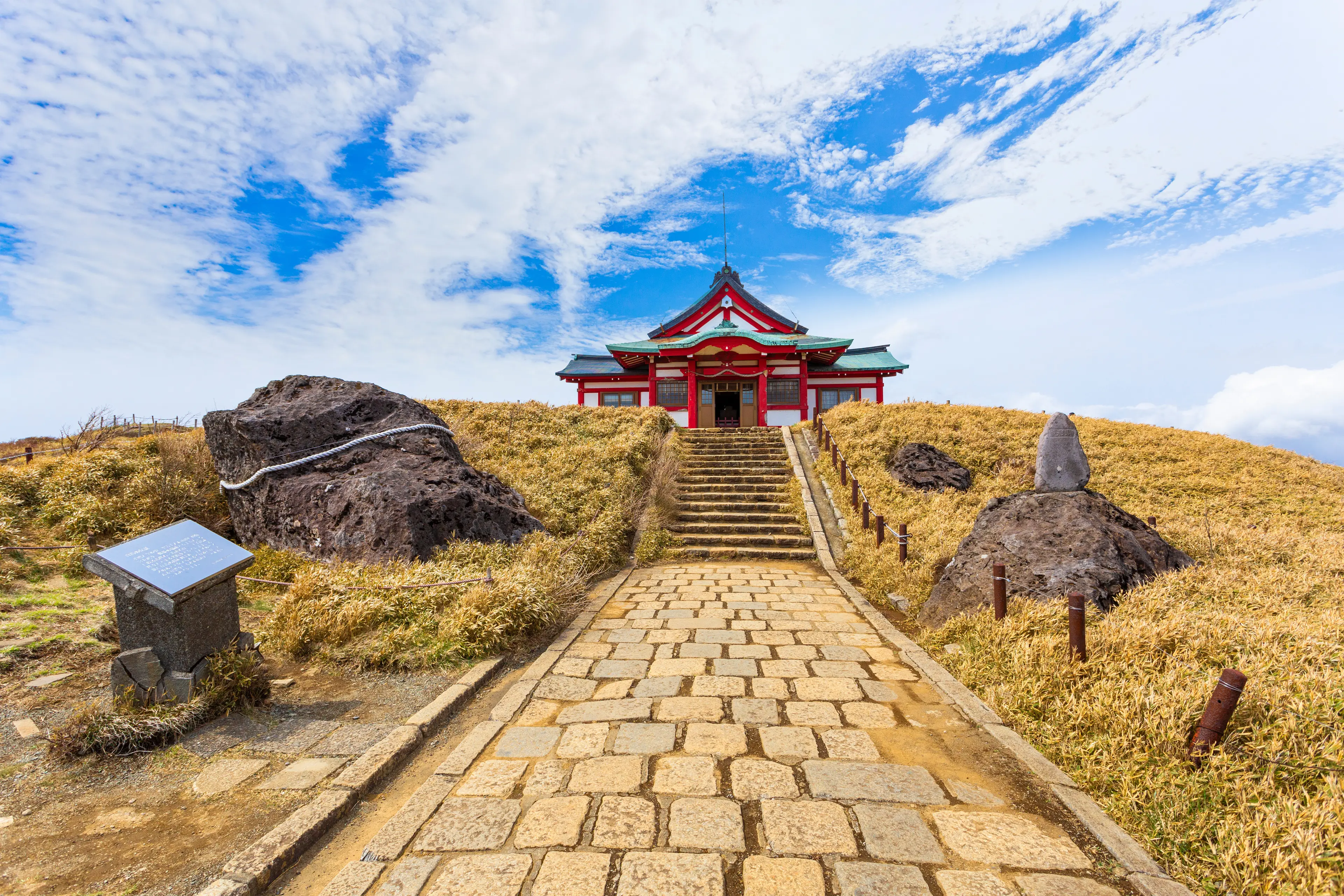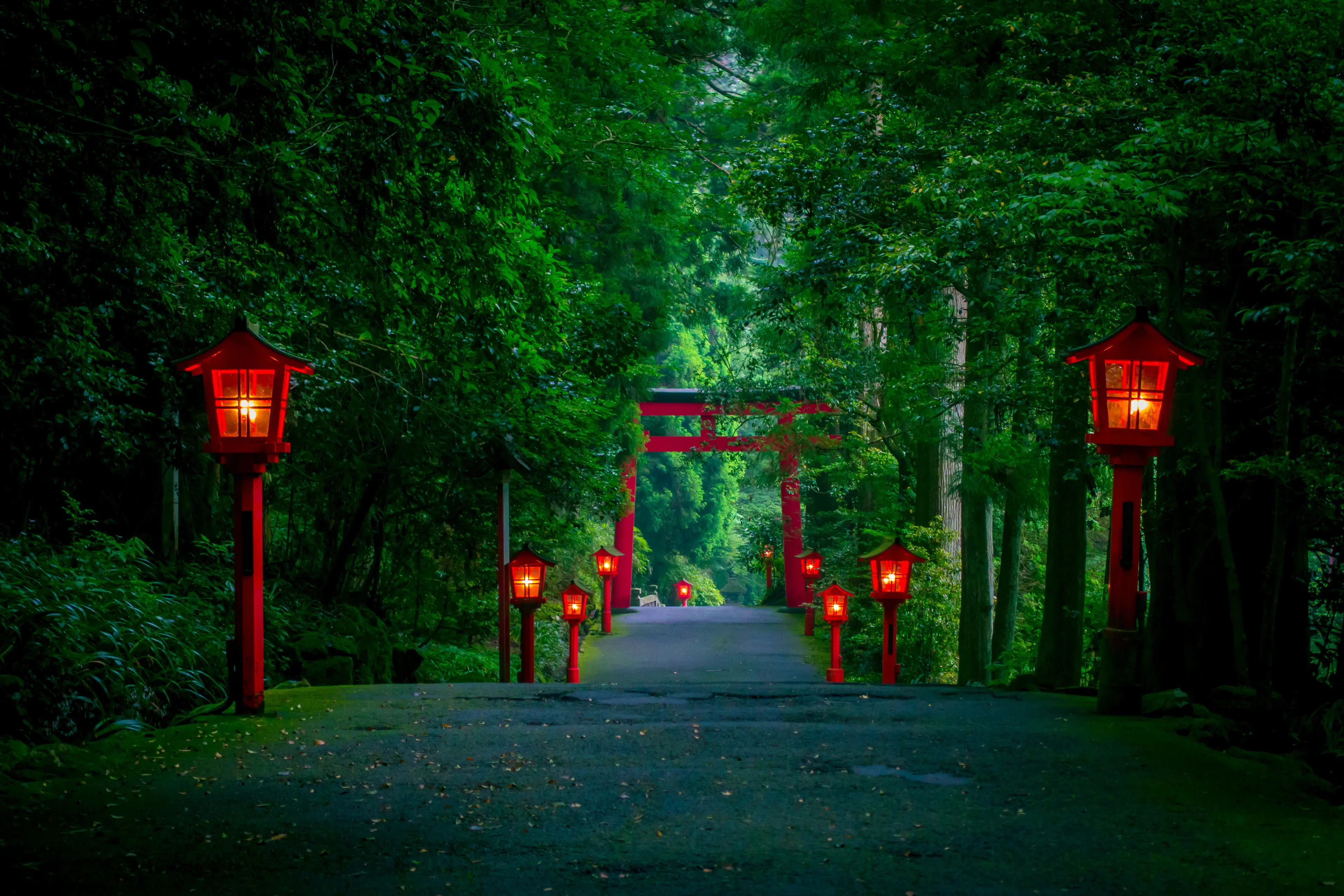1-Day Hakone Adventure & Relaxation Itinerary for Local Couples
Hakone, Japan
1 days





About Hakone, Japan
Experience the serene beauty of Hakone, Japan, a picturesque town nestled in the heart of the Fuji-Hakone-Izu National Park. Famous for its hot springs, natural beauty, and the view of nearby Mt. Fuji, Hakone offers a relaxing retreat from the hustle and bustle of city life. Explore the Hakone Shrine hidden in the forest, cruise on the pristine Lake Ashi, or take a scenic ride on the Hakone Tozan Railway. Don't miss the Open Air Museum, showcasing impressive sculptures set against stunning mountainous backdrops. Enjoy traditional Kaiseki Ryori (multi-course meal) and unwind in one of the many Onsens (hot springs) for the ultimate Japanese experience. Hakone is a perfect blend of culture, art, and nature.
1-Day Itinerary
Attractions in Itinerary (4)

1Hakone Tozan Railway
A mountain railway offering scenic views, especially during the hydrangea season and autumn foliage.

2Gora
Gora is a district in Hakone known for its hot springs, parks, and the Hakone Gora Park, a Western-style park with a beautiful rose garden and tropical botanical garden.

3Owakudani Valley
Owakudani Valley is a volcanic valley with active sulphur vents and hot springs in Hakone. It is famous for its scenic views, hiking trails, and Kuro-tamago - a local specialty of eggs hard-boiled in the hot springs.

4Hot Springs in Hakone Yumoto
Hakone Yumoto is the gateway to the Hakone region and is famous for its hot springs. Visitors can enjoy a relaxing bath in the many ryokans and public bath houses in the area.
Local Food and Drinks (12)

Yuba
Yuba is a by-product of tofu and is very popular in Hakone. It's a delicacy often served in traditional multi-course meals.

Black Eggs
Black Eggs, or Kuro-tamago, are eggs hard-boiled in the hot springs of Hakone. Eating one is said to add seven years to your life.

Hakone Beer
Hakone Beer is a local craft beer brewed in the region. It's a must-try for beer enthusiasts visiting Hakone.

Soba Noodles
Soba, or buckwheat noodles, are a staple in Hakone. They are often served cold with a dipping sauce or hot in a soup.

Unagi
Unagi, or freshwater eel, is a popular dish in Hakone. It's usually grilled and served over rice.

Tempura
Tempura is a dish of battered and deep-fried vegetables and seafood. It's a common dish in Hakone and throughout Japan.

Sake
Sake is a traditional Japanese rice wine. There are several breweries in the Hakone region where you can try different varieties.

Miso Soup
Miso Soup is a traditional Japanese soup consisting of a stock called dashi, miso paste, and various other ingredients. It's a staple in Hakone and throughout Japan.

Matcha Tea
Matcha Tea is a type of powdered green tea that is often served in traditional tea ceremonies in Hakone.

Yakitori
Yakitori is a popular street food in Hakone. It consists of skewered and grilled chicken, often served with a soy-based sauce.

Udon
Udon is a type of thick wheat noodle often served hot in a mildly flavored broth. It's a common dish in Hakone and throughout Japan.

Amazake
Amazake is a traditional sweet, low-alcohol Japanese drink made from fermented rice. It's often enjoyed during the New Year's holidays in Hakone.
Best time to visit
The best time to visit Hakone, Japan, is during the spring months of March to May and the autumn months of September to November. During these periods, the weather is typically mild and pleasant, making it ideal for sightseeing and outdoor activities. Spring offers the added beauty of cherry blossoms, while autumn boasts vibrant fall foliage. However, it's worth noting that these are also peak tourist seasons, so attractions may be more crowded.
How to get around
Hakone Tozan Train
This is the only mountain railway in Japan. It allows you to travel from Hakone-Yumoto Station (at the base of the mountain) to Gora Station (near the top). The train is known for its switchbacks, where the driver and the conductor change shifts and the train switches to reverse direction.
Hakone Tozan Cable Car
From Gora Station, you can take the Hakone Tozan Cable Car to Sounzan Station. The cable car travels up the steep slope of the mountain, offering panoramic views of the surrounding area.
Hakone Ropeway
From Sounzan Station, you can take the Hakone Ropeway to Togendai Station. The ropeway offers stunning views of Lake Ashi, the Owakudani volcanic valley, and on clear days, Mount Fuji.
Bus
There are numerous bus lines that operate in Hakone, connecting various tourist attractions such as the Hakone Open-Air Museum, Hakone Shrine, and many ryokans (traditional Japanese inns).
Boat
From Togendai, you can take a boat cruise on Lake Ashi. The boats are designed like pirate ships, adding a fun element to the journey. The cruise offers beautiful views of the lake and its surroundings.
Car
Renting a car is a convenient way to get around Hakone, especially if you plan to visit areas that are not easily accessible by public transportation. Note that international visitors will need an International Driving Permit (IDP) to rent a car in Japan.
Taxi
Taxis are readily available in Hakone and can be a convenient way to reach your destination. However, they can be expensive for longer distances.
Ridesharing
Ridesharing services like Uber are not widely available in Hakone. However, local taxi companies may offer similar services through their own apps.
Walking
Many of Hakone's attractions are located in scenic areas that are enjoyable to explore on foot. For example, the Old Tokaido Road is a historic highway that is now a popular hiking trail.
Bicycle
Renting a bicycle can be a fun and active way to explore Hakone. There are several rental shops in the area, and some ryokans may also offer bicycle rentals to their guests.
Important information
Currency¥ JPY
Time zoneUTC+9
Driving sideLeft
Emergency phoneAmbulance: 119; Fire: 119; Police: 110
Drinking waterYes
Power sockets
Voltage100 V
Things to know about Hakone, Japan as a first time visitor
1
Hakone is located in the Kanagawa Prefecture, about 60 miles southwest of Tokyo.
2
The local currency is the Japanese Yen (JPY). Credit cards are widely accepted, but it's always a good idea to carry some cash.
3
Japanese is the official language. English is not widely spoken, so it may be helpful to learn a few basic phrases.
4
Hakone is known for its hot springs, or 'onsen'. Remember, it's customary to bathe naked and wash thoroughly before entering the hot springs.
5
The weather in Hakone is relatively mild. Summers (June to August) can reach up to 86°F (30°C), while winters (December to February) can drop to 32°F (0°C).
6
Public transportation is efficient and reliable. The Hakone Tozan Train and Hakone Tozan Bus are popular options for getting around.
7
Tipping is not customary in Japan. In fact, it can sometimes be seen as rude.
8
Hakone is located within the Fuji-Hakone-Izu National Park, so it's a great location for hiking and outdoor activities.
9
The Hakone Free Pass is a cost-effective way to travel around Hakone. It provides unlimited use of Odakyu-affiliated buses, trains, boats, cablecars and ropeways in the Hakone area.
10
Hakone is famous for its traditional inns, or 'ryokan'. Staying in a ryokan can provide a unique cultural experience.
11
Most ryokan provide meals as part of the accommodation package. These meals often feature local and seasonal ingredients.
12
It's customary to remove your shoes when entering homes and certain traditional establishments in Japan.
13
Japan operates on a 100V supply voltage and 50Hz.
14
Hakone is in the Japan Standard Time zone, which is 9 hours ahead of Greenwich Mean Time (GMT +9).
15
Japan has a low crime rate and Hakone is generally a safe place to visit. However, it's always important to take standard travel precautions.
16
The emergency phone number in Japan is 110 for police and 119 for fire and ambulance.
17
Japan has a national health insurance system, but it does not cover short-term visitors. It's recommended to have travel insurance that covers health.
18
Hakone is known for its traditional crafts, such as Yosegi Zaiku (marquetry) and Hakone Glass.
19
The drinking age in Japan is 20 years old.
20
Japan is a predominantly cash-based society, so it's a good idea to have cash on hand for small purchases, transportation fares, and at locations where cards may not be accepted.
Basic Japanese to know as a first time visitor
English phrase | Native phrase | Pronunciation | When to use it |
|---|---|---|---|
Hello | こんにちは | Konnichiwa | Greeting someone |
Goodbye | さようなら | Sayonara | Leaving or saying goodbye |
Thank you | ありがとう | Arigatou | Showing gratitude |
Yes | はい | Hai | Agreeing or confirming |
No | いいえ | Iie | Disagreeing or denying |
Excuse me | すみません | Sumimasen | Getting attention or apologizing |
I'm sorry | ごめんなさい | Gomen nasai | Apologizing |
Do you speak English? | 英語を話しますか? | Eigo o hanashimasu ka? | Asking if someone speaks English |
I don't understand | わかりません | Wakarimasen | When you don't understand what was said |
Where is the bathroom? | トイレはどこですか? | Toire wa doko desu ka? | Asking for the location of the bathroom |
How much does this cost? | これはいくらですか? | Kore wa ikura desu ka? | Asking the price of something |
I would like this | これをください | Kore o kudasai | When you want to order or buy something |
Help | 助けて | Tasukete | When you need assistance |
Good morning | おはようございます | Ohayou gozaimasu | Greeting someone in the morning |
Good night | おやすみなさい | Oyasumi nasai | Saying goodnight or going to bed |
Delicious | おいしい | Oishii | Complimenting food |
Please | お願いします | Onegaishimasu | Making a request |
Cheers | 乾杯 | Kanpai | Making a toast |
Where is...? | ...はどこですか? | ...wa doko desu ka? | Asking for the location of something |
I'm lost | 迷子です | Maigo desu | When you are lost |
Packing List
Clothing
Comfortable walking shoes
Lightweight clothing
Sweater or light jacket
Rain jacket or umbrella
Socks and underwear
Hat and sunglasses
Toiletries
Travel-size shampoo and conditioner
Travel-size body wash
Toothbrush and toothpaste
Deodorant
Razor and shaving cream
Travel-size lotion
Sunscreen
Hand sanitizer
Face mask
Travel documents and essentials
Passport
Driver's license or ID card
Credit and debit cards
Cash (Japanese Yen)
Hotel reservation confirmation
Travel insurance documents
Emergency contact information
Electronics and gadgets
Smartphone
Charger for smartphone
Power bank
Camera
Charger for camera
Universal travel adapter
Headphones
Miscellaneous items
Snacks
Water bottle
Travel guidebook for Hakone
Map of Hakone
Japanese phrasebook
Travel pillow
First aid kit
Tissues
Reusable shopping bag
Weather Conditions
Hakone, Japan is known for its diverse weather patterns, which can greatly influence your travel experience. Here are some weather-related tips to help you plan your trip. Hakone experiences a humid subtropical climate, which means it has hot, humid summers and generally mild winters. The summer months, from June to August, can reach temperatures of around 85°F (29°C), so it's advisable to pack lightweight, breathable clothing. However, sudden rain showers are common during this period, so don't forget to bring a raincoat or umbrella. The winter months, from December to February, are relatively mild with temperatures usually hovering around 41°F (5°C). However, Hakone is located in a mountainous region, so it can get quite chilly, especially at night. Pack warm clothing, including a heavy coat, scarves, gloves, and hats. Snowfall is not uncommon during these months, so be prepared for potential disruptions to travel plans. The spring (March to May) and autumn (September to November) seasons are considered the best times to visit Hakone. The temperatures during these seasons are quite comfortable, usually ranging between 50°F (10°C) and 70°F (21°C). These periods also coincide with the beautiful cherry blossom bloom and the vibrant autumn foliage, respectively. Regardless of when you visit, Hakone's mountainous terrain can lead to sudden changes in weather. It's always a good idea to check the local forecast regularly during your stay and plan your activities accordingly. Also, remember to pack layers so you can adjust to any unexpected changes in temperature. Lastly, Hakone is famous for its hot springs, which can be particularly enjoyable during the colder months. So, don't forget to pack a swimsuit, regardless of the season. Enjoy your trip!
| Month | Hi / Lo (°C) | Weather Overview |
|---|---|---|
January | 9° / -1° | January is the coldest month in Hakone, with temperatures often dropping below freezing. Snowfall is common, so pack warm clothing and enjoy the beautiful winter scenery. |
February | 9° / -1° | February is still quite cold, with a chance of snow. It's a great time to visit the hot springs and enjoy the winter landscapes. |
March | 14° / 2° | March sees the beginning of spring, with temperatures gradually rising. Cherry blossoms start to bloom towards the end of the month. |
April | 20° / 8° | April is a popular time to visit due to the full bloom of cherry blossoms. The weather is mild, but it can be a bit rainy. |
May | 24° / 12° | May brings warm and comfortable weather, perfect for outdoor activities. The lush greenery and blooming flowers make for beautiful scenery. |
June | 28° / 16° | June is the start of the rainy season, so be prepared for wet weather. Despite the rain, the temperatures are warm and the scenery is lush. |
July | 32° / 20° | July is hot and humid, with frequent rain showers. It's a good time to visit the indoor attractions or enjoy a dip in the hot springs. |
August | 34° / 22° | August is the hottest month in Hakone, with high humidity. It's a great time for water activities, but be prepared for the heat. |
September | 30° / 18° | September sees the end of summer and the start of autumn. The weather is still warm, but the humidity decreases, making it more comfortable. |
October | 24° / 12° | October brings cooler temperatures and the beautiful autumn foliage. It's a great time for hiking and enjoying the fall colors. |
November | 18° / 6° | November is quite cool, with the autumn foliage at its peak. It's a great time to visit the outdoor hot springs and enjoy the fall scenery. |
December | 10° / 1° | December is a chilly month, with temperatures dropping and a chance of snow. It's a great time to enjoy the winter scenery and the indoor attractions. |
Did you know?
Places near by Hakone, Japan

Odawara Castle
A reconstructed castle with a museum inside.

Enoshima Island
A small offshore island, home to some of the closest sandy beaches to Tokyo and Yokohama and offers a variety of attractions.

Kamakura
A city known for its significant Buddhist temples and Shinto shrines.

Mount Fuji
Japan's highest mountain and the focal point of the sprawling Fuji-Hakone-Izu National Park.

Tokyo
Japan's bustling capital, mixes the ultramodern and the traditional.

Yokohama
Japan's second largest city with a rich history and many attractions.

Nikko
A city at the entrance to Nikko National Park, most famous for Toshogu, Japan's most lavishly decorated shrine.